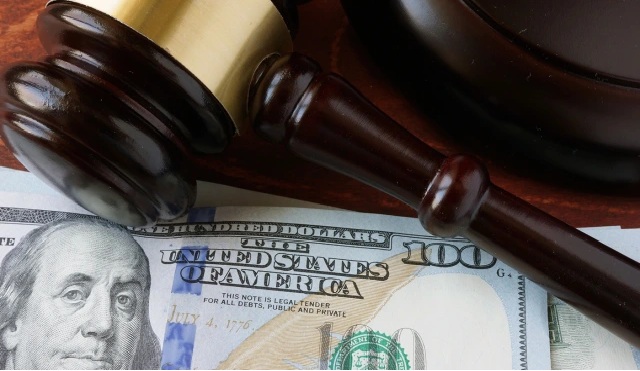Glenn C. Altschuler
A few weeks ago, after holding up the New York State budget past its April 1 deadline, a revision of rules for imposing cash bail on criminal defendants proposed by Gov. Kathy Hochul was approved by the Assembly and Senate. The legislation removed the requirement that judges use “the least restrictive conditions” in setting bail. Having been burned by bail reform, which divided Democrats and united Republicans in opposition, Gov. Hochul announced she was “done” with the issue.
Bail reform may or may not go away. But Republicans will not stop slamming Democrats as soft on crime, even if it means slanting and sensationalizing facts about bail reform, murder and mayhem — as long as voters continue to buy what they’re selling.
Motivated by a concern that cash bail requirements discriminate against individuals who cannot come up with the money (including people of color, who account for 66 percent of felony arrests and prison sentences in the state), the New York State Legislature passed a law, signed by Gov. Andrew Cuomo in 2019, that prohibited judges from requiring bail in most misdemeanor and nonviolent felony cases. Judges retained discretion to set bail in almost all cases involving a violent felony, and for anyone who was released and then rearrested for another offense. To preserve the presumption of innocence, the law continued to prohibit judges from requiring bail because a defendant appeared to be dangerous.
Amendments in 2020 and 2022 restored judicial discretion in 1st degree larceny cases, 2nd degree burglary, escape from custody, repeat offenders, failure to register as a 3rd degree sex offender and a prior history of criminal convictions.
In 2022, Rep. Lee Zeldin (R-N.Y.) made crime a centerpiece of his campaign to unseat Hochul as governor. New Yorkers, Zeldin claimed, walk the streets “like they’re in a combat zone.” Violent crime was rising because “people who are in charge in Albany feel like they haven’t passed enough pro-criminal laws.” Zeldin promised to “declare a crime emergency” on his first day in office and suspend laws limiting cash bail, solitary confinement and trials for violent criminals in adult courts.
“Vote like your life depends on it, “ he said, “because it does.” Zeldin ran a surprisingly competitive race in the deep blue state, losing to Hochul by less than six points. Millions of dollars in law-and-order campaign ads — along with a botched state gerrymandering process — helped New York Republicans gain four seats in Congress.
Violent crime did indeed spike in New York in 2020. The murder rate rose statewide from 2.9 per 100,000 inhabitants in 2019 to 4.2 in 2020. Shooting incidents doubled in New York City. Assaults increased by 10 percent. Although causes are difficult to pinpoint with precision, COVID-19, for which New York City was an epicenter early in 2020, appears to have played a significant role. The pandemic added to employment insecurity, isolation, anger, fear and stress; lockdowns reduced neighborhood safety measures, after-school programming, youth employment, mental health and drug treatment services.
A slew of studies, however, uncovered no direct evidence linking bail reform to increases in crime. The New York City Police Department reported that between January and June 2020 only one person released under the bail reform laws had been charged with a shooting. New York City’s comptroller revealed that rearrests of individuals awaiting trials were nearly identical before and after the implementation of the reforms. In 100,000 cases throughout the state involving pre-trial release related to the revised legislation between July 2020 and June 2021, according to the Times Union of Albany, 2 percent of defendants were rearrested, only a fraction of them for crimes involving a firearm.
The crime wave in New York City, moreover, began to subside in 2021. In July, according to Center for Disease Control and Prevention (CDC) data, New York City had one of the lowest murder rates among the 50 largest cities in the United States. Factoring in accidental deaths as well as homicides, the CDC concluded, the city is one of the safest places in the country. And a report issued by the New York Police Department in May 2023 documents a continuing decline in murder rates, shooting incidents and shooting victims.
Moreover, the spike in crime affected the entire country, rural as well as urban areas, red states more than blue states. In 2020, murder rates were 40 percent higher in states carried by Donald Trump than states carried by Joe Biden. More recent data identifies the states with the highest murder rate per capita as Mississippi, Louisiana, Alabama, Missouri, Arkansas, South Carolina and Tennessee. States with the highest violent crime rates are Arkansas, Tennessee, Louisiana, Alabama and Alaska, with New York State among the lowest.
This trend is also evident within states. In 2020, the 23 red counties in California had a murder rate 14 percent higher than the state’s 35 blue counties. Bakersfield, the largest city in the congressional district of House Speaker Kevin McCarthy (R-Calif.), had double the murder rate of San Francisco, represented by former Speaker Nancy Pelosi (D-Calif.). Kern County, home to a large fraction of McCarthy’s constituents, had the highest homicide rate of any county in California.
Nonetheless, Republican scare tactics have influenced voters. In 22 of 26 annual surveys administered by Gallup since 1993, at least 60 percent of respondents maintained that crime had increased in the previous year, despite the significant downward trend during that period. In 2022, as the GOP flooded the airwaves with ads skewering Democrats for making Americans less safe, three-quarters of Republican and Republican-leaning voters (compared to 49 percent of Democrats and Democratic leaners) indicated that violent crime would play an important role in the vote they were about to cast in the midterms.
Shortly before the 2022 election, New York Republican strategist Thomas Doherty said that if he were running a campaign, crime would be the only thing he would talk about. All the more so, of course, if Democrats continue to cede the issue to Republicans.
Courtesy: thehill







